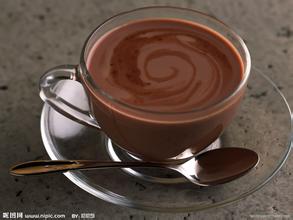Panamanian Rosa Coffee Bean Flavor producing area introduction to Panamanian Coffee Origin Panamanian Jade Manor Rose Summer
Not many people followed Rose Summer until one day, Esmeralda Manor in Panama separated it from other varieties and won the national coffee competition.
She is so extraordinary that the fruity and floral elements are like Yega Xuefei from Africa and Ethiopia on the other side of the world. Of course, these are all old news now. Some small farms also get summer roses and are eager to grow their own roses.
However, the results are different, and this "star" variety seems to have different tastes in different geographical locations due to the influence of weather, soil and altitude. But in the Aktenango region, we see typical rosy summer features: slender beans, changes in baking, and the elegant and unripe flavor in the cup. When it comes to Panama, perhaps most people only know the Panama Canal and do not know Panamanian coffee. The main producing area of Panamanian coffee is located near the Baru volcano in the west. The emerald estate of Boquete, a small town in the east of the volcano, is famous all over the world, and the west side of Vocan is also the No. 2 coffee town, where the famous Carmen Manor is located.
It was the construction of the Panama Canal 100 years ago that attracted a large number of senior European intellectuals. After the completion of the construction of the canal, a large number of senior engineers stayed because they were infatuated with the excellent climate in western Panama and bought a manor in Pokaidee. It opened a precedent for the cultivation of boutique coffee in Panama. But the early Panamanian coffee was not famous and produced little. But why did geisha suddenly become popular in 2004 and occupy the top coffee list for a long time? It starts with the origin of a geisha.
The Emerald Manor brings geisha to coffee drinkers all over the world. before setting off the rosy summer red cap, she turned out to be a member of the windbreak on the edge of the coffee forest. Geisha varieties of coffee below 1400m above sea level have a mediocre flavor and a very low yield and have no economic value. However, if planted in an altitude area above 1500m and tempered by the cold wind, it will show a unique flavor spectrum. Emerald Manor owner Peterson and his son stumbled upon the secret and set out to plant Geisha independently and participate in the 2004 BOP competition with Hara Miyou selection (Jaramillo Special), which brought out the world geisha craze.
Where exactly does Geisha come from?
According to the data of all parties, the spread route is roughly as follows: in 1931, the British envoy went to Geisha Mountain in Ethiopia to collect disease-resistant bean seeds-- 1931-1932 seeds were spread to Kitale in Kenya under the names of Geisha and Abyssinian-- young plants were transplanted in 1936 to the Ryan Mugu Coffee Research Institute (Lyamungu) in Uganda and Tanzania-1953 Costa Rica's CATIE Coffee Research Institute has repeatedly introduced young plants from Ryan Mugu and other countries-Don Bach, a coffee farmer in Panama, introduced disease-resistant geisha varieties from CATIE in 1963. Although there are materials to prove it, geisha have been around for decades, it is difficult to determine whether today's geisha are the seeds introduced at that time, and whether they have experienced hybrids is no longer known.

Important Notice :
前街咖啡 FrontStreet Coffee has moved to new addredd:
FrontStreet Coffee Address: 315,Donghua East Road,GuangZhou
Tel:020 38364473
- Prev

Rich floral flavor of Ethiopian coffee the characteristics of the manor area introduce high-quality coffee beans
Ethiopian coffee has the highest citrus aroma in the world. Whether instant coffee or freshly ground coffee, the aroma of orange or lemon can be smelled during extraction. The nose is characterized by strong floral, fruity, sour and sweet aromas, but the alcohol is slightly thicker or less dense. The biggest disadvantage is that it is easy to bake unevenly, especially sun-dried beans. Even the best Grade3 Harald sun beans are often
- Next

Bolivian Coffee Flavor and taste the characteristics of the manor producing area introduce the origin of Bolivian coffee
In the past, most of the coffee in Bolivia was of mediocre quality, but in recent years, the production of boutique coffee has developed rapidly, and there have been a lot of pretty good beans. In recent years, the COE (Cup of excellence) system, which was first implemented in Brazil, has become more and more popular. Bolivia has also introduced this system, which can stimulate the enthusiasm of coffee farmers on the one hand and improve it on the other.
Related
- Detailed explanation of Jadeite planting Land in Panamanian Jadeite Manor introduction to the grading system of Jadeite competitive bidding, Red bid, Green bid and Rose Summer
- Story of Coffee planting in Brenka region of Costa Rica Stonehenge Manor anaerobic heavy honey treatment of flavor mouth
- What's on the barrel of Blue Mountain Coffee beans?
- Can American coffee also pull flowers? How to use hot American style to pull out a good-looking pattern?
- Can you make a cold extract with coffee beans? What is the right proportion for cold-extracted coffee formula?
- Indonesian PWN Gold Mandrine Coffee Origin Features Flavor How to Chong? Mandolin coffee is American.
- A brief introduction to the flavor characteristics of Brazilian yellow bourbon coffee beans
- What is the effect of different water quality on the flavor of cold-extracted coffee? What kind of water is best for brewing coffee?
- Why do you think of Rose Summer whenever you mention Panamanian coffee?
- Introduction to the characteristics of authentic blue mountain coffee bean producing areas? What is the CIB Coffee Authority in Jamaica?

